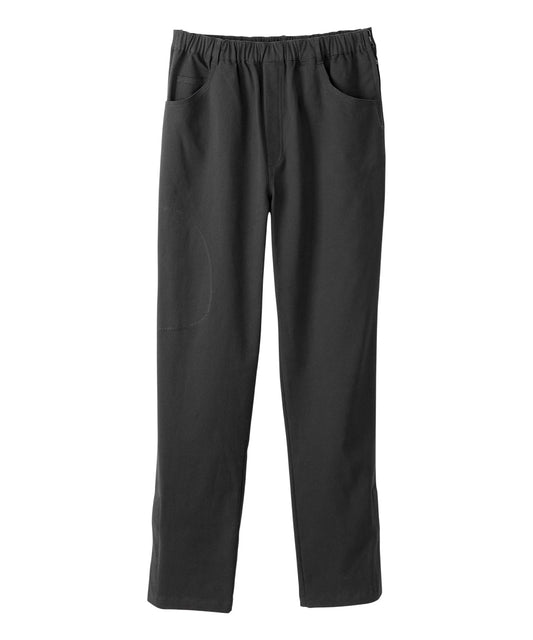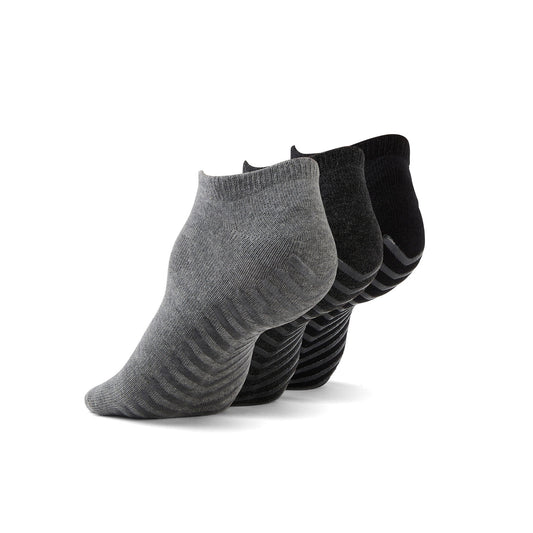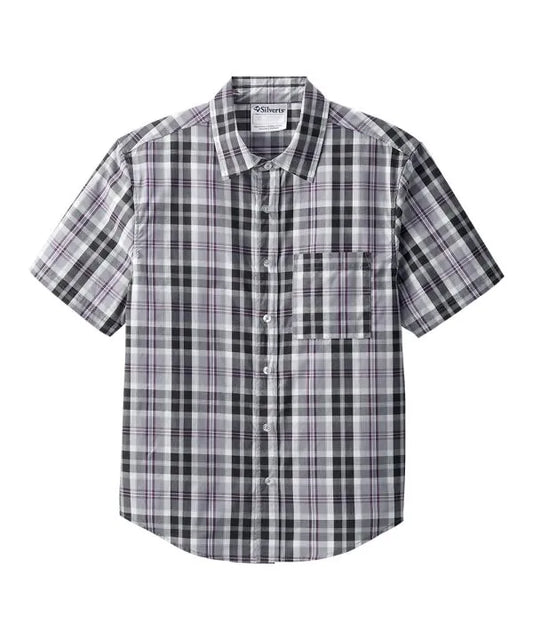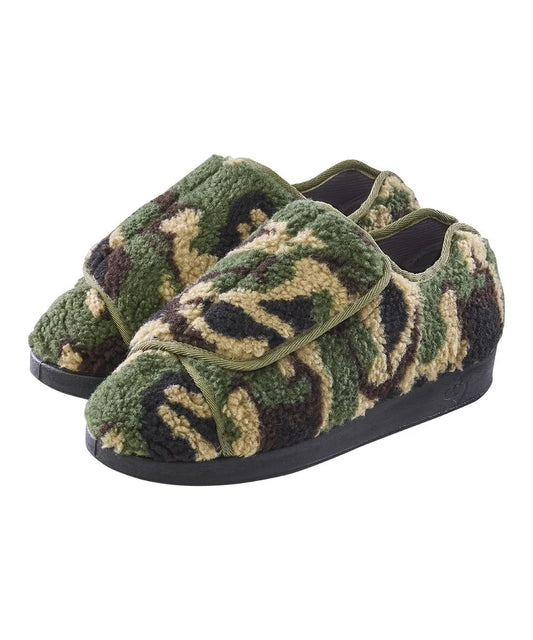Written By: Shreeya Shah
Diabetes will impact not only your blood sugar levels, but also your feet. It is estimated that 537 million people aged 20-79 years have diabetes globally, and this will continue to climb in the coming decades. Beyond affecting your glucose control, diabetes will affect your circulation and nerve damage, while also prolonging healing time. These conditions will increase your risk of injury and infection on your feet.
When blood flow is decreased, even a small blister or cut will take a lot longer to heal, and in some cases, can lead to a serious complication if unaddressed. Nerve damage (neuropathy) can also result in decreased ability to feel pain or discomfort, which may lead to problems developing unnoticed. Prevention and protection are very important.
Wearing the right footwear doesn't just keep you comfortable; it is an integral component of your overall health. At June Adaptive, we want you to know that protecting your feet can be both functional and fashionable. Our diabetic footwear provides protection for sensitive feet, reduces the potential for injury, and keeps you moving comfortably and confidently day to day.
Why Diabetics Need Specialized Shoes
Those diagnosed with diabetes have unique foot problems. Nerve damage can lead to "neuropathy," which dulls the sensation of the feet, making it difficult to notice cuts, blisters or skin irritation. Poor blood flow can also hinder the recovery process, meaning even minor wounds take significantly longer to heal. These are primarily based on nerve damage or poor circulation, which over time can develop into major problems, such as infections or ulcers.
Shoes designated as diabetic shoes are specifically designed and intended to address these unique risk factors. They assure that the fit eliminates pressure points, the fit and finish do not allow for skin irritation, and provide space for swelling. Everyday fashion shoes typically have seams, stiff materials, or a narrow shape that will create complete friction, which totally wears on any foot structure, and this unnecessary stress is completely uncalled for! The right diabetic shoe creates a physical barrier of protection, allowing you the ability to walk with safety, while also providing comfort.
Top Features Of Diabetic-Friendly Footwear
Choosing diabetic shoes is more than simply finding a nice-looking shoe. It is about finding shoe elements that help keep your feet healthy. A seamless inside is important to eliminate rubbing and reduce the chance of developing blisters. A wide toe box allows toes to spread naturally without crowding. Soft and breathable material will help keep the temperature regulated and help disperse excess moisture, which is critical in preventing fungal issues.
A cushioned insole acts to absorb shock and relieve pressure at sensitive points, while non-slip soles assist in walking or transitioning to different surfaces. Adjustable closers, like Velcro straps, assist people with varying foot length, swelling, and naturally changes in one's foot size during the day while letting a person get a more accurate fit. An additional benefit of light-weight shoes is less strain on a person's legs and allowing endurance in the number of steps they can take before fatigue. comfortable walking experience.
June Adaptive's adaptive footwear is an excellent combination of medical benefits with pleasing aesthetics; you get foot safety and style.
Best Slip-On Styles For Neuropathy
Neuropathy is a common complication of diabetes and causes a loss of sensation in the foot. Loss of sensation can make it difficult to feel the small bumps, pressure points, or small wounds, and it may even pose a challenge to put on shoes. Solutions might be slip-on shoes, which could allow the wearer to avoid bending down or lacing up shoes. For many wearers, slip-on footwear can support the effort of getting dressed by eliminating the need to push, pull or pull shoes tight when bending down may be too much of an effort.
The best slip-on diabetic shoes will facilitate the foot to slide in without effort, include stretchable uppers that can accommodate swelling, a heel counter (a part of the shoe that goes around the heel) that holds the shoe on the foot without tightness, and a cushioned collar around the ankle. A well-made sole that is supportive iron out wearers' best complaints of foot fatigue with a shoe.
When discussing shoes, it is essential not to overlook the right socks! If you own a pair of slip-on diabetic shoes, your socks are equally as important. Consider a recommendation like June Adaptive's Unisex Ultra-Soft Anti-Slip Crew Socks. These socks act as a perfect counterpart to slip-on diabetic shoes since they include soft cushioning, help reduce friction inside the shoe, and have grips on the sole of the socks to help avoid slips or falls on smooth flooring.
Are Custom Orthotics Worth The Investment?
Custom orthotics can make all the difference for some people, even the right shoe won't do it. Custom insoles are individualized inserts that are specifically moulded to your feet and help distribute pressure from your foot to help alleviate pressure on higher-risk areas. For diabetics, this can mean less callus, less pain, and most importantly, less chance of ulcers.
Custom orthotics can also correct not only how you walk but also how your body is aligned, which means better posture and less pain in your knees, hips, and back. If you have a structural foot change that has altered your shape, such as fallen arches or bunions, orthotics may be crucial. There are over-the-counter insoles now that can be substituted for custom-made insoles, and although similar, they simply cannot mimic the exact shape of your unique foot, making custom orthotics much more effective.
June Adaptive sells shoes with removable insoles and excess depth to enable the use of orthotics or insoles to provide additional support without sacrificing style or a poor fit.
How To Spot Early Signs Of Foot Problems
With diabetic foot health, as with many things in life, prevention is the best treatment, and checking your feet daily can catch small problems before they grow serious. Redness or swelling can be an indication of irritation or infection, so you should pay attention to the colour of your feet (especially between the toes) and how warm they feel compared to the rest of your body. Likewise, if you notice a blister, sore, or cut, you should take immediate action even if it seems small. Because you lose the sensation over time, you may not have pain and be unaware of any injuries. Just as important, keep your eyes on any changes in colour or temperature of your foot skin - these changes can also be early warnings of circulation problems.
Similarly, calluses or corns are warnings that you are developing areas of excess pressure that will likely break down into ulcers. You will also want to follow those same procedures with nail tracking. Nails that are thickening, discoloured, or causing ingrown toenails should be treated as well because they can result in wounds just as easily.
If it is difficult for you to see under feet due to vision challenges, simply using a mirror, or asking a family member or caregiver can be a simple yet effective tool for checking your feet.
June Adaptive Footwear Recommendations For Diabetics
For the sake of expediency, here are three of my favourite options from June Adaptive that will keep sensitive feet protected:
The Men’s Extra-Wide Walking Shoes feature a roomy toe box, cushioned insole and Velcro closures, plus they are easy to put on and can be worn all day, without developing pressure points.

For Women, June Adaptive's Wide-Opening Slip-On Sneakers are also practical and stylish. In addition to a soft interior lining, there is less friction during wear as the breathable materials help keep your feet comfortable throughout the day.

And for safe movement around the house or in adaptive shoes, the Unisex Ultra-Soft Anti-Slip Crew Socks have cushioning and an important level of grip.

These products truly represent June Adaptive's vision of safety, comfort and attractive design for people with diabetes and sensitive feet.
Final Thoughts: Protecting Your Feet, Protecting Your Health
Your feet do the work of carrying you through life, and if you have diabetes, you must keep your feet safe to remain independent and mobile. Wearing the right footwear can prevent injury, comfort you, and help you live more actively. The best diabetic shoes will serve you by having a protective aspect, while you also wear a sock that provides protection. Here are a few tips to take good care of your feet and help ensure your long-term health: First, wear shoes with protective features. (If protective footwear can reduce the risk of foot ulceration, consideration must be given to using supportive socks, as well.). Secondly and most importantly, check your feet regularly.
At June Adaptive, we see that good foot health starts from a stable base. Our diabetic shoes and diabetic socks are designed to keep you safe without sacrificing style.
Subscribe to our newsletter for exclusive offers, expert tips. Your feet deserve the best—get them the protection they need, every step of the way.















